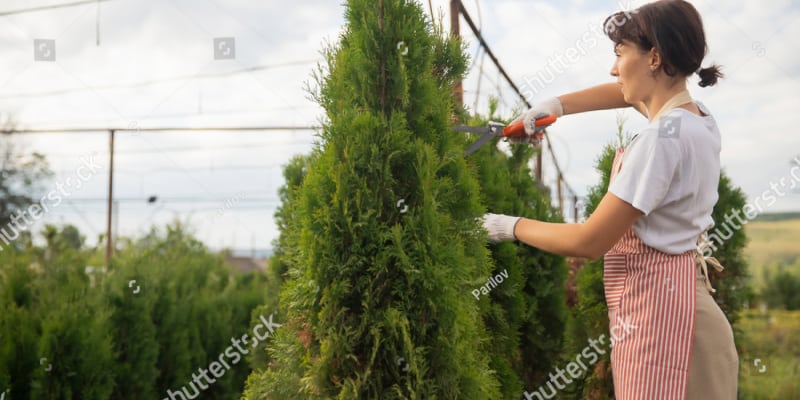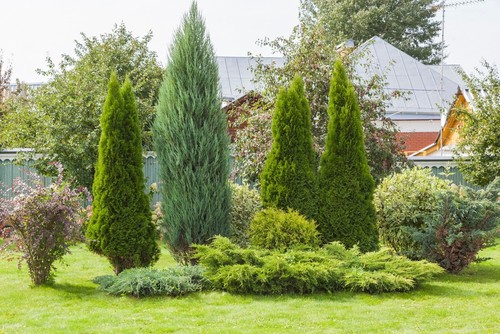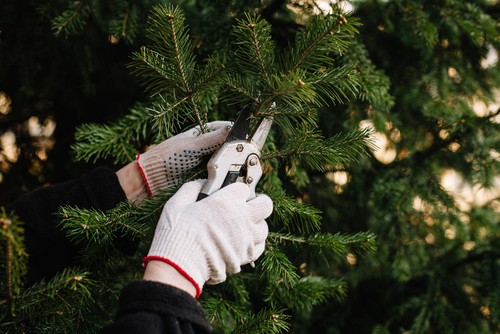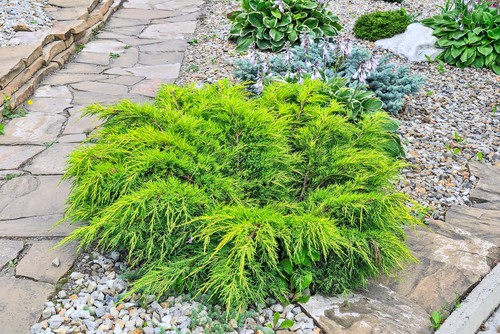
How and when to trim conifers
Our site is reader supported, this means we may earn a small commission from Amazon and other affiliates when you buy through links on our site.
Conifers are easy to care for trees that you shouldn’t trim unless you absolutely have to. You may need to do this task if branches become diseased or die, or end up damaged by high winds. Here’s when and how to trim conifers in general so that you don’t harm the tree.
This guide is more about ornamental conifers and not hedging conifers such as Leylandii and Thuja which obviously need trimming 2-3 times a year. Even these conifers should be lightly pruned to maintain the desired shape and size and never prune back to brown bark. For all other types of conifers, pruning should be limited.
When and where to trim conifers
Whorl-branched conifers (such as fir, cedar and spruce) have new growth in the spring. The branches grow only at their tips. Don’t trim this kind of conifer tree back beyond where the new growth is as the tree won’t grow out in that direction that season. Wait until the new growth appears so you can judge where to trim and give the cuts time to heal.
Non-whorled conifers (including juniper and cypress) are a little different. New growth appears at the tips of the branches but also randomly throughout the tree. The new buds and foliage appear on the tree much further back than with whorl-branch conifers. This means that you can be a little more assertive in your trimming and cut them back further. But still, be careful to not cut back the new green growth as well as the damaged branches. Once again, wait until you can see the new growth in the spring to do the pruning.
How to trim conifers
Most conifers grow from new wood. Trimming any new branches affects your tree’s ability to develop strongly and healthily. And cutting into the old wood means that that part of the tree won’t ever regrow. You’ll be left with bare brown patches amidst the rest of the greenery.
Whorl-branched conifers
Fir, cedar and spruce have a natural shape that most people find pleasing. You don’t have to trim the tree for it to keep this shape. Prune the tree once a year initially, especially if you want to limit it to a certain size.
Control the tree’s growth by removing the new tips of the branches to stop it growing in that direction. To encourage the tree to grow more slowly, trim off about 50% of these new tips in the late spring or early summer. To stop the tree’s growth entirely, remove each new tip when it reaches 3cm.
Non-whorl branched conifers
Cypress, juniper and hemlock can be trimmed anywhere along the stem. In spring, trim the tree to maintain its shape by lightly cutting back the outermost growth. Also, remove any stray stems that are starting to form at random angles. To maintain the size of the tree, trim the conifer once only, in summer after the new growth has stopped. This keeps it the size it is for the rest of the season.
In both cases
Remove diseased or dead branches as soon as you see them. Be sure to sanitise your pruning shears before you start the task and in-between each branch that you cut. This stops you spreading the disease from one part of the tree to another.
Have you considered growing conifers in containers, check out this guide on growing conifers in pots


